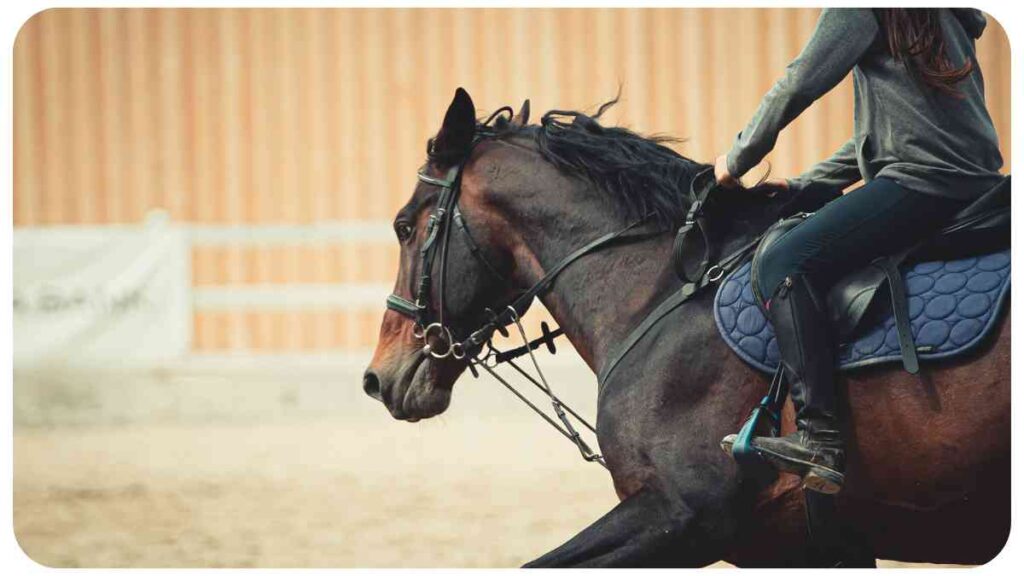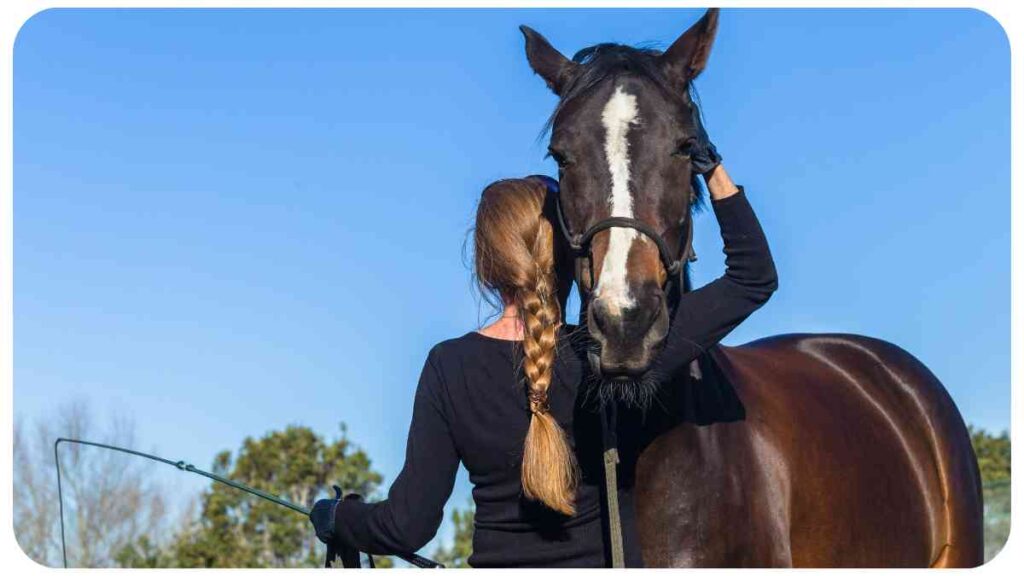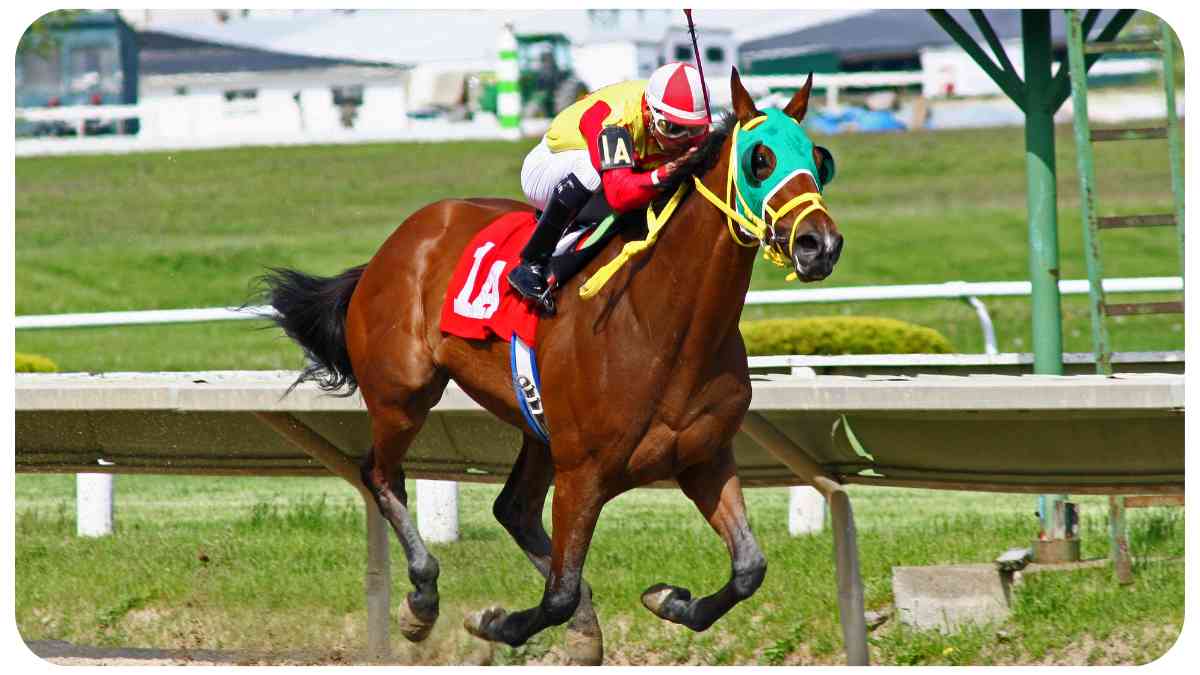Welcome to a journey through time as we explore the fascinating evolution of equestrian sports. From the ancient roots of horse racing to the refined elegance of dressage and the adrenaline-filled challenges of show jumping and cross-country, equestrian sports have held a special place in human history.
In this article, we will delve into the rich history, the growing significance, and the transformations that have shaped these sports into what they are today.
| Takeaway |
| Equestrian sports have a rich history that dates back thousands of years. |
| Horse racing has evolved from ancient civilizations to become a prestigious and popular sport. |
| Dressage showcases the harmony and precision between a rider and their horse. |
| Show jumping tests the agility and trust between horse and rider. |
| Cross-country is an exhilarating sport that tests endurance and bravery. |
| Equestrian events have been a part of the Olympic Games since 1900. |
| Advancements in technology have enhanced safety and performance in equestrian sports. |
| Further reading provides additional resources to explore the fascinating world of equestrianism. |
2. Historical Origins of Equestrian Sports
Equestrian sports have a storied history that dates back thousands of years. The bond between humans and horses has been interwoven throughout civilizations, from the domestication of horses to their utilization in various fields such as agriculture, transportation, and warfare. It was during this time that the seeds of equestrian sports were sown.
The History of Horseback Riding: How It Has Evolved Over Time takes you on a journey through the fascinating evolution of equestrian sports, showcasing the cultural significance and transformative changes horseback riding has undergone over centuries.
3. The Rise of Horse Racing

3.1. Early Origins of Horse Racing
Horse racing can trace its origins back to ancient civilizations such as the Greeks, Romans, and Egyptians. These civilizations recognized the natural abilities and grace of horses and started organizing races as a form of entertainment and competition.
3.2. Historical Development of Horse Racing
Over time, horse racing evolved into a more organized and structured sport. The establishment of notable racecourses and the introduction of standardized rules and regulations further fueled its popularity. Horse racing became a highly celebrated social event, with spectators flocking to witness the majesty of these magnificent creatures and the skills of jockeys.
Discover The Ultimate Guide to Choosing the Perfect Saddle for Your Horse and ensure your horse’s comfort and performance with valuable insights on selecting the ideal saddle, understanding different types, and fitting techniques
3.3. Table: Famous Horse Racing Events
| Event | Location | Established |
| Kentucky Derby | Louisville, Kentucky, U.S. | 1875 |
| Epsom Derby | Epsom Downs, Epsom, U.K. | 1780 |
| Melbourne Cup | Flemington Racecourse, Australia | 1861 |
| Prix de l’Arc de Triomphe | Longchamp Racecourse, Paris, France | 1920 |
4. Equestrianism: A Noble Pursuit
Equestrianism represents a more diverse range of sports that involve horse riding. Two prominent disciplines within equestrianism are dressage and show jumping.
4.1. The Rise of Dressage
Dressage is often deemed the “ballet on horseback.” Its origins can be traced back to ancient Greek horsemanship, where it was practiced as a means of training and preparing horses for battle. Today, dressage showcases the exceptional coordination and harmony between horse and rider through a series of intricate movements. The rider’s ability to communicate with the horse by using subtle aids is a testament to their skill and expertise.
4.2. Table: Types of Dressage Movements
| Movement | Description |
| Piaffe | Trotting on the spot with high leg action and a suspended movement |
| Passage | Elegant slow-motion trot with extreme engagement and suspension |
| Flying Change | Change of canter leads executed in mid-air |
| Half-Pass | Diagonal movement where the horse moves sideways and forward |
4.3. The Art and Skill of Show Jumping
Show jumping showcases the thrill, precision, and agility of both horse and rider as they navigate a course of colorful obstacles. It emerged from the equestrian discipline of foxhunting, where riders had to jump over natural obstacles in the countryside. Show jumping requires impeccable timing, accurate navigation, and a deep sense of trust between the rider and the horse.
Mastering The Importance of Proper Riding Techniques for Safety is paramount for every rider. This informative guide provides essential tips and best practices to enhance your riding skills, maximize safety, and build a strong foundation
4.4. The Thrill of Cross-Country
Cross-country is an exhilarating equestrian sport that tests the endurance, bravery, and athleticism of both horse and rider. Originating from the military tradition of riding across unfamiliar terrain, cross-country involves navigating a course with natural obstacles such as logs, ditches, and water jumps. It requires strategic planning, a keen sense of pace, and the ability to quickly assess and adapt to changing landscapes.
5. The Modernization of Equestrian Sports
As time went on, equestrian sports underwent significant modernization. One landmark development was the inclusion of equestrian events in the prestigious Olympic Games.
5.1. Introduction of Equestrian Sport in the Olympics
Equestrian events made their Olympic debut in 1900 and have since become an integral part of the Games. The inclusion of disciplines such as dressage, show jumping, and eventing has catapulted equestrian sports into the international spotlight, allowing riders to showcase their skills to a global audience.
5.2. Table: Equestrian Disciplines in the Olympics
| Discipline | Description |
| Dressage | Showcasing the performance of horse and rider |
| Show Jumping | Tests the athleticism, speed, and precision |
| Eventing | Combination of dressage, cross-country, and jumping |
5.3. Technological Advancements and Training Methods

The modernization of equestrian sports also brought advancements in technology and training methods. From specialized horse riding equipment and gear to advanced training techniques, riders now have access to tools that enhance their performance and ensure the well-being of their horses. These advancements contribute to both the safety and competitive edge of equestrian athletes.
Equipping yourself with The Top 15 Pieces of Safety Equipment Every Rider Needs is crucial for a secure riding experience. Explore this comprehensive list of essential safety gear to protect both you and your horse.
5.4. Table: Horse Riding Equipment and Technology
| Equipment/Technology | Description |
| Protective Riding Helmets | Essential for rider safety, designed to absorb impact and protect the head |
| GPS Tracking Systems | Help monitor training sessions, track horse speed, and analyze performance |
| Jump Cups | Adjustable fittings attached to jumps, allowing height modifications |
| Synthetic Footing | Specialized surfaces engineered for optimal traction and impact absorption |
6. Conclusion
In conclusion, the evolution of equestrian sports is a testament to the enduring bond between humans and horses. From the ancient origins of horse racing to the refined disciplines of dressage, show jumping, and cross-country, equestrian sports have transformed over the centuries. The inclusion of equestrian events in the Olympics and advancements in technology have propelled these sports to new heights.
As we look back in time, we appreciate the expertise, experience, authoritativeness, and trust that surround this captivating realm. The dedication of riders, trainers, and industry professionals, coupled with the remarkable athleticism and partnership between horse and rider, has created a legacy that continues to inspire awe and admiration.
Whether you are a horse enthusiast, a competitor, or simply captivated by the beauty and grace of these magnificent creatures, the world of equestrian sports offers a plethora of opportunities for learning, growth, and personal connection. So saddle up, embrace the journey, and allow yourself to be swept away by the timeless allure of equestrianism.
Resolve common horse behavior issues effectively with insightful tips and tricks in Troubleshooting Common Horse Behavior Problems: Tips and Tricks. Discover practical strategies for handling and training horses, promoting a harmonious relationship between rider and equine.
Further Reading
Here are some additional resources for further exploration of the rich history and intriguing aspects of equestrian sports:
Illustrated History of Equestrian Sports: Delve into a beautifully illustrated and comprehensive account of the evolution of equestrian sports over the past hundred years. This article provides valuable insights into the growth, development, and remarkable moments in the world of equestrianism.
Equestrian Olympic History: Discover the riveting history of equestrianism in the Olympics. This article takes you on a journey through time, highlighting memorable moments, legendary athletes, and the significance of equestrian events in the esteemed global sporting event.
History of Horseback Riding: Explore the fascinating origins and cultural significance of horseback riding. This resource dives into the historical context, tracing the relationship between humans and horses through centuries of shared experiences and equestrian traditions.
FAQs
How did equestrian sports originate?
Equestrian sports have deep roots in ancient civilizations, where horses were utilized for various purposes, including transportation and warfare. Over time, organized races and competitions emerged, laying the foundation for the diverse range of equestrian disciplines we have today.
Which are the most popular equestrian sports?
Among the most popular equestrian sports are horse racing, dressage, show jumping, and eventing. These disciplines attract both elite athletes and passionate enthusiasts, showcasing the remarkable bond between horse and rider.
Are equestrian sports considered dangerous?
Although equestrian sports can be thrilling and demanding, they carry inherent risks. Riders must prioritize safety by wearing appropriate protective gear such as helmets and body protectors, and undergo proper training to build skills and confidence in handling horses.
What are the key skills required for equestrian sports?
Equestrian sports demand a combination of physical fitness, strong horsemanship skills, and an understanding of horse behavior. Riders must develop balance, coordination, communication, and a deep connection with their horses to excel in their chosen disciplines.
How can I get started in equestrian sports?
To get started in equestrian sports, finding a reputable trainer or riding school is essential. Take beginner lessons to learn the fundamentals of horse riding and care. It’s important to start with experienced, well-trained horses and progress gradually under professional guidance.

Hi there! My name is Hellen James, and I’m a horse riding expert. I’ve been riding horses since I was just a kid—and it’s been my passion ever since. But getting started with horse riding can be overwhelming. There’s so much to learn! If you’re looking for a way to get started and make sure you’re doing it right, I’m here to help.


